

In 2013, Walmart experienced an inventory crisis, losing over $3 billion due to out-of-stock merchandise and a lopsided inventory turnover ratio.
Sure, plenty of mammoth companies have mismanaged their inventories and lost billions while remaining successful. However, with only half of small businesses in the U.S. making it to year five, prioritizing effective inventory management at the SMB level is a critical means of growth and survival.
Inventory management techniques provide cost-saving and profit-boosting benefits for small businesses that help them remain profitable and competitive. Below is a list of some of the most popular and effective inventory management techniques and directions for using them to improve your business.
Jump to:

Economic order quantity (EOQ) is a method that uses the lowest amount of inventory necessary to meet peak customer demand without going out of stock or producing obsolete inventory. It’s used to create inventory control, or to minimize costs while maximizing profits through inventory management.
EOQ uses three variables in its formula:
The formula for calculating EOQ is:
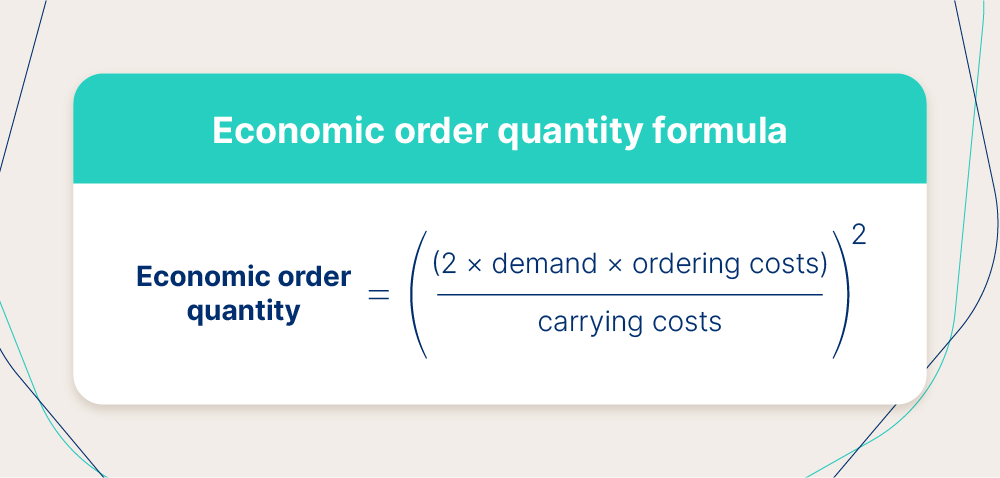
Economic order quantity = square root of [(2 x demand x ordering costs) ÷ carrying costs]
Best for: Quickly growing businesses with regular inventory needs
Benefits:
Considerations:
Minimum order quantity (MOQ) refers to the lowest amount of stock that a supplier will sell to you. If you don’t buy the MOQ, the supplier won’t sell you the product.
For retailers, MOQs are especially helpful in limiting excess stock and maintaining steady profit margins. By only offering products in bulk, retailers can more easily balance production and demand.
Best for: Retailers and wholesalers looking to balance production costs with demand
Benefits:
Considerations:
ABC analysis is an inventory management technique that involves sorting inventory into three categories, according to how well they sell and how much they cost to hold:
ABC analysis helps you make smarter decisions about reordering, which, in the long run, can reduce obsolete inventory and help optimize your inventory turnover ratio.
Best for: Small businesses struggling to manage inventory levels
Benefits:
Considerations:
Just in time inventory management (JIT) is the process of making:
Essentially, JIT creates goods to order. When orders come through, manufacturers only order the inventory needed to produce those specific items.
The JIT system can be integral in minimizing costs, excess inventory, and unnecessary warehousing. However, keeping up as order volume grows can be very difficult.
Best for: Growing companies looking to reduce costs as much as possible
Benefits:
Considerations:
Safety stock inventory is a small surplus inventory that companies keep on hand to guard against variability in market demand and lead times. Safety stock plays an integral role in the smooth operations of your supply chain in various ways, such as:
Without safety stock inventory, you risk:
The safety stock formula is relatively straightforward and requires only a few inputs for calculation. The formula for finding safety stock is:
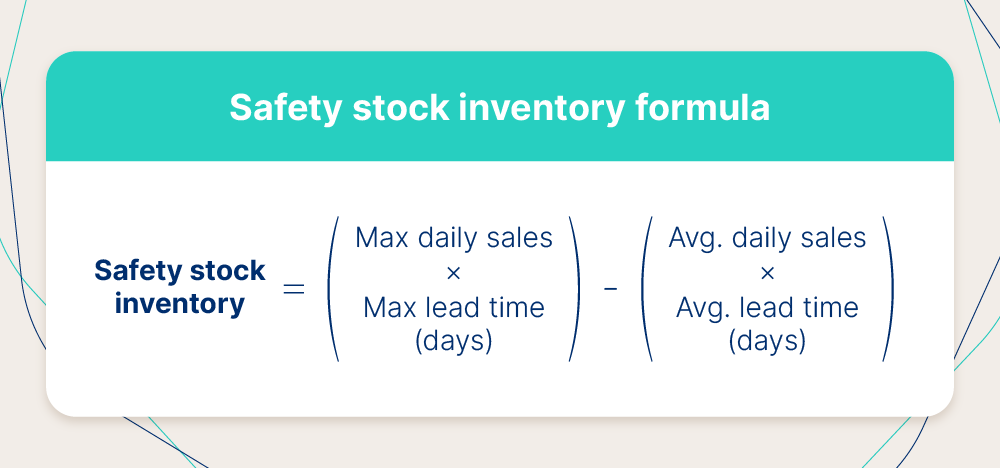
(Max Daily Sales x Max Lead Time in Days) – (Average Daily Sales x Average Lead Time in Days) = Safety Stock Inventory
Best for: Companies in industries that experience regular demand fluctuation
Benefits:
Considerations:
FIFO and LIFO are two widely used accounting methods in inventory management that can determine accurate cost and profitability.
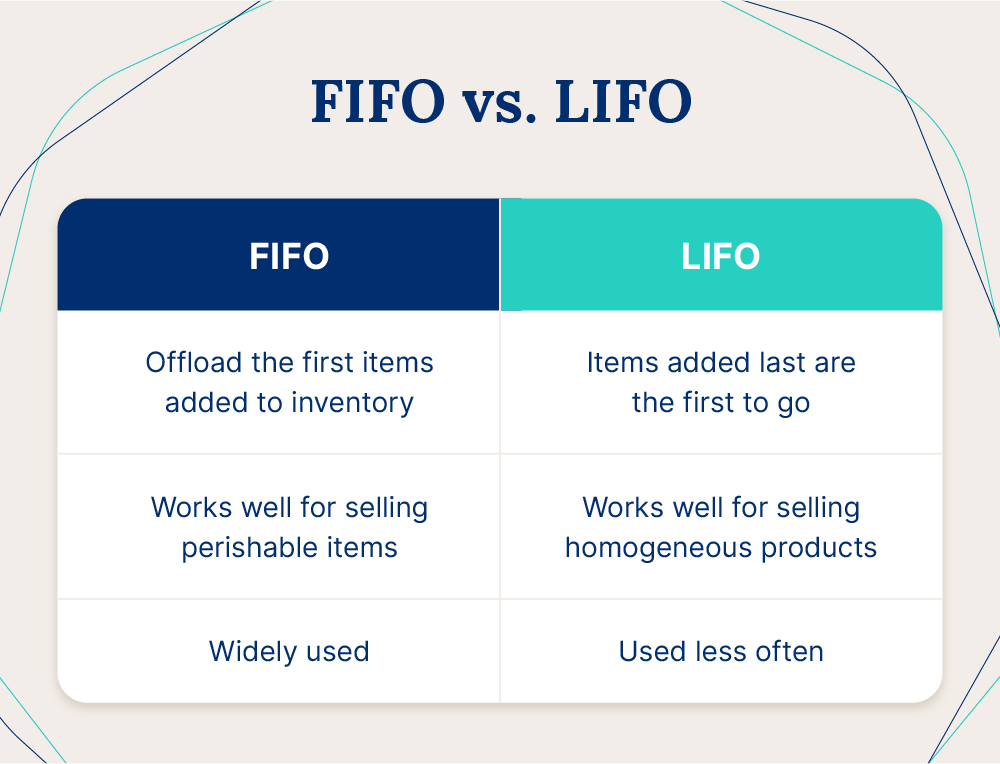
FIFO (first-in-first-out) is an inventory accounting method based on the idea that the first items in your inventory should be the first to leave. LIFO (last-in-first-out) conversely states that the last items in your inventory should be the first ones that leave.
Food and beverage companies use FIFO since they deal with perishable goods. LIFO is a great method for non-perishable homogeneous goods like raw materials.
Best for: Food and beverage companies (FIFO) and raw materials (LIFO)
Benefits:
Considerations:
The reorder point formula tells you approximately when you should order more stock, or the lowest amount of inventory you can sustain. Businesses can take the guesswork out of reordering by determining reorder points, so they never have too little or too much.
The formula for finding the reorder point is:

(Average Daily Unit Sales x Average Lead Time in Days) + Safety Stock = Reorder Point
It can be monotonous manually setting reorder points, so getting them correct is pivotal so you don’t experience stockouts. The best inventory management software uses automation to determine your reorder point for you so you never fall victim to unexpected disruptions.
See what automated inventory management can do for you.
Best for: Industries with little to no demand fluctuations
Benefits:
Considerations:
Batch tracking is a process that uses batch numbers to trace goods along the distribution chain using batch numbers.
Through batch tracking, you can keep tabs on all your raw materials, WIP inventory, and finished goods — ensuring you don’t fill your warehouse with unusable items.
Best for: Food and beverage companies that need to track expiration dates
Benefits:
Considerations:
Consignment inventory is a business arrangement where the consignor, usually a vendor or wholesaler, gives their goods to a consignee, which is generally a retailer. In this agreement, however, the consignee doesn’t have to pay for the goods until they sell them.
This inventory management technique allows retailers to enjoy less risk and low ownership costs, which can be great for testing new products on the market.
Best for: Retailers looking for lower carrying costs
Benefits:
Considerations:
A perpetual inventory management system, also known as a continuous inventory system, prioritizes real-time inventory tracking so no transaction goes unaccounted for.
With real-time updates, businesses can more accurately forecast demand and be more proactive about reorders and inventory turnover.
Best for: Multi-location retailers who experience seasonal demand
Benefits:
Considerations:
Dropshipping is a business model that allows you to sell and ship products you don’t own and don’t stock. Your suppliers –– wholesalers or manufacturers –– produce the goods, warehouse them, and ship them to your customers for you.
The dropshipping process is relatively simple:
Dropshipping allows individual product sellors the luxury of low costs to get started and low inventory costs.
Best for: Those looking to sell products as a side hustle
Benefits:
Considerations:
Lean manufacturing, often referred to as lean warehousing, is a system for maximizing value for the customer while minimizing manufacturing waste.
This system seeks to prevent three types of waste:
The five principles of a lean manufacturing system are:
By minimizing or eliminating Muda, Mura, and Muri while adhering to the five principles, champions of lean manufacturing believe this inventory management technique can produce the highest-quality products while increasing your revenue and productivity.
Best for: Manufacturers looking to decrease production costs
Benefits:
Considerations:
Sigma, or Six Sigma, strives to combat waste by producing almost no defective products. The idea behind Sigma is to improve the manufacturing process to reach near perfection.
The first and most-used method in Six Sigma is a 5-step process called DMAIC:
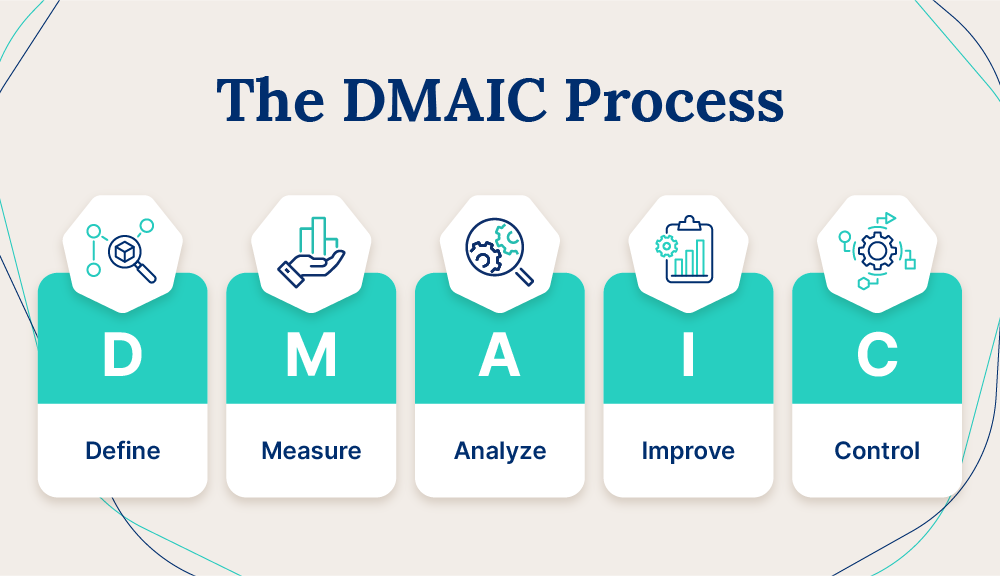
The DMAIC process uses data and measured objectives to create a cycle of continuous improvement in your manufacturing methods.
Best for: Sales teams looking to grow their customer base
Benefits:
Considerations:
Lean Six Sigma combines lean manufacturing with Six Sigma to create a complete system that removes waste and reduces process variation for streamlined manufacturing and optimal product output.
Lean Six Sigma primarily uses Six Sigma’s processes and methods as the backbone of the system –such as DMAIC –– to drive focused manufacturing improvements while incorporating many lean techniques and tools to reduce wasteful steps and processes.
Best for: Industries with more complex processes, like engineering and manufacturing
Benefits:
Considerations:
Days sales in inventory (DSI) measures the time it takes for a retailer to sell its entire inventory. When you determine your company’s DSI, you can quantify if your inventory is flying off the shelves. You’ll also gain other insights, like:
Use the following calculation to find DSI:
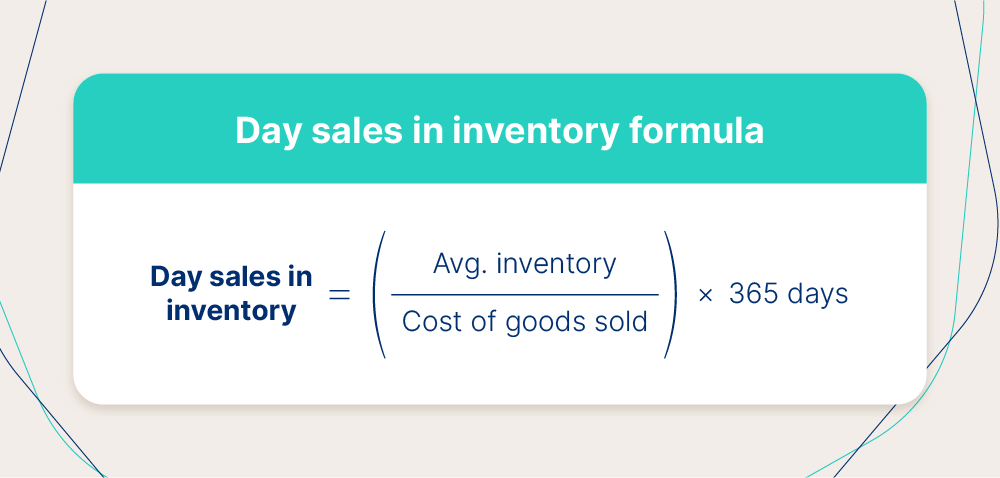
DSI = (Average Inventory / Cost of Goods Sold (COGs)) x 365 days
By learning your DSI, you inherently learn about the liquidity of your inventory, which can help you make smarter decisions about your products.
Best for: Retailers selling physical inventory
Benefits:
Considerations:
Cross-docking is a supply chain tactic used to reduce inventory costs and speed up delivery times. Essentially, cross-docking removes the storage stage of the product lifecycle. In this method, products move directly from the truck, from the warehouse they were produced into outbound delivery trucks headed to customers’ doors.
Cross-docking plays into the lean methodology. By eliminating any storage phase, companies can delete time that’s not valuable to customers, thus saving inventory costs and increasing efficiency.
Best for: Retailers with high inventory turnover looking to reduce logistics costs
Benefits:
Considerations:
Materials requirement planning (MRP) describes a process where manufacturers use both demand forecasting and the bill of materials (BOM) of a product to accelerate the production process. Manufacturers look specifically at three elements in MRP:
By establishing these elements before production, manufacturers can establish a more efficient process that doesn’t create waste.
Best for: Product-based manufacturers struggling to meet inventory requirements
Benefits:
Considerations:
After identifying the inventory management technique that makes the most sense for your business, you can finetune other processes and fully achieve inventory flow.
Here are a few other best practices that can complement your chosen inventory management technique:
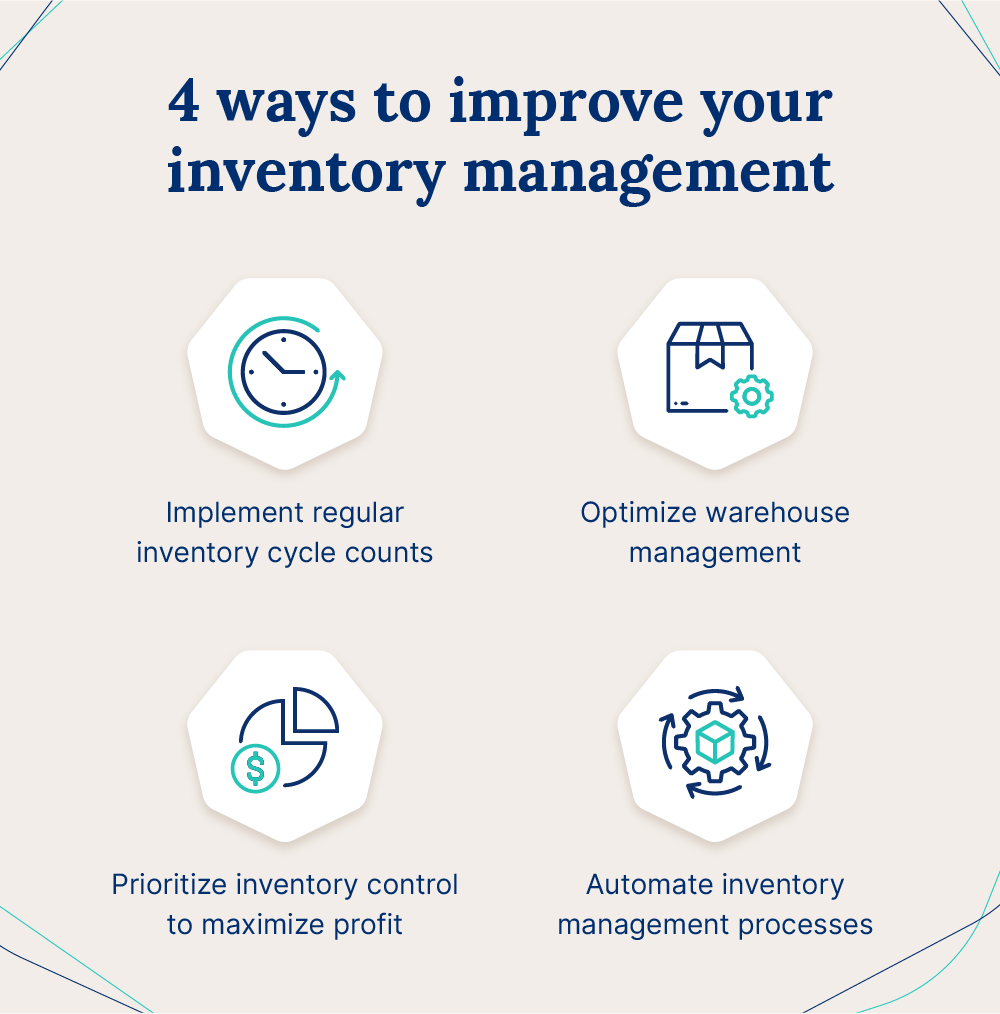
Start a free trial of Cin7 today.
Still wondering about the best inventory management method for your business? We’ve got you covered. Here are some frequently asked questions and answers about inventory management techniques.
The four most popular inventory management techniques are:
These four methods tend to be the most widely used due to their proven success and their versatility to fit into several different business models.
First-in-first-out (FIFO) is the most commonly used inventory management technique in manufacturing. Manufacturers like using the FIFO method because its structure closely resembles how stock typically moves through the inventory lifecycle.
Many believe that FIFO is the best inventory technique because of how closely its model resembles the inventory flow.
In most cases, the first items you add to your inventory will be the cheapest since prices typically rise over time. As a result, those items will be most likely to sell first.
FIFO and just in time inventory management are the best inventory methods for small businesses.
While FIFO may provide your small business with the most accurate cost and profitability information, just in time inventory, while risky, can help small businesses save money in their early years.
Inefficient inventory management can have compounding effects that can stunt a business’s growth and cause you to spend unnecessary time and money. While these techniques can add efficiency to your inventory processes, software can collect data to make smarter decisions for you, so you can focus on growing your business.
Connecting your inventory management through comprehensive software is a surefire way to achieve flow and add efficiency to your existing processes.
Level up your inventory management techniques with a free trial of Cin7.


Product companies have to innovate quickly in the coronavirus era. With increases in online shopping and demand for click-and-collect, retailers and wholesalers are doing everything from shifting their sales-channel focus to fundamentally changing how they do business.

Lost, obsolete or overstocked inventory drives up costs and destroys margins. Without inventory visibility, you won’t know your business is suffering until it’s too late.